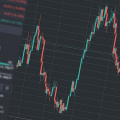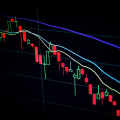The success of any forex trading system lies in its ability to accurately and effectively evaluate system performance. Making sure that a system is working optimally and according to its design requires a comprehensive understanding of the system, its design parameters, and the environment it is operating in. An effective evaluation of a system's performance must take into account both qualitative and quantitative metrics. This article will provide an overview of the steps necessary for a successful evaluation of system performance. It will discuss key components such as defining objectives, analyzing existing systems, collecting performance data, and establishing metrics.
Additionally, it will provide advice on how to interpret results and make decisions about system implementation and optimization.
Evaluating system performance
is a crucial element of any successful Forex trading system. In order to evaluate system performance, it is necessary to first understand the goals and objectives of the system. This includes understanding what the system is intended to do, what its goals are, and any limitations that may be imposed by the environment in which the system will operate. Once these goals have been established, it is necessary to assess the various components of the system, such as the market data, trading strategies, and risk management tools.The aim should be to identify any potential weaknesses in the system and to ensure that any changes or modifications are made in order to improve its performance. Once the components of the system have been assessed, it is then important to consider the impact of external factors on the system. This includes any economic or political changes that may affect the performance of the system, as well as any technical issues that may arise. It is also important to consider the impact of other traders and investors on the system, such as their trading strategies or risk management tools.
The final step in evaluating system performance is to measure and analyze the results. This involves looking at the returns generated by the system over a period of time, as well as any changes or modifications that have been made to the system during this period. It is important to look at both short-term and long-term results in order to get an accurate picture of how the system is performing. In addition to assessing and analyzing the results of a system, it is also important to consider its implementation and evaluation.
This includes ensuring that all components of the system are properly installed and configured, as well as monitoring its performance over time. It is also important to assess any changes or modifications that have been made to the system and to ensure that they are having a positive impact on its performance.
Implementing a System
Implementing a System:When implementing a new system, it is important to consider all aspects of its design and architecture. This includes ensuring that all components are properly installed and configured, as well as testing its performance over a period of time. Any changes or modifications should also be assessed and monitored in order to ensure that they are having a positive impact on its performance. When designing the system, it is important to make sure that the architecture is robust and efficient.This includes the selection of the appropriate hardware, software, and networking components, as well as ensuring that the system is scalable and can handle future growth. Additionally, it is important to consider the security implications of any changes made to the system. Once the system is implemented, it should be tested to make sure that it meets performance requirements. This includes benchmarking the system to ensure that it can handle the amount of data being processed, as well as ensuring that it is able to respond quickly to requests from users. Additionally, the system should be monitored over time to ensure that it is meeting its performance goals. Finally, any changes or modifications made to the system should be thoroughly tested and assessed in order to ensure that they are having a positive impact on its performance.
This includes testing any new features or changes that have been implemented, as well as making sure that any existing features are still functioning correctly. By following these steps, it is possible to ensure that the system remains efficient and reliable.
Evaluating System Performance
Evaluating system performance is an essential part of any successful Forex trading system. It involves assessing both short-term and long-term results in order to gain a comprehensive picture of the system's performance. Additionally, it is important to consider any external factors that may influence the performance of the system, such as economic or political changes.When evaluating a system's performance, it is important to look at both quantitative and qualitative data. Quantitative data includes metrics such as return on investment, profit and loss, and drawdown. These metrics can provide a clear indication of how the system is performing in terms of profitability and risk management. Additionally, it is important to look at qualitative data such as trading frequency, trading style, and market conditions.
These metrics can help to identify any potential issues with the system that need to be addressed. It is also important to assess the system's performance over time. This involves looking at how the system has performed over different timeframes in order to gain an understanding of its consistency and reliability. Additionally, it is important to consider the overall market environment when evaluating a system's performance. This includes understanding how different market conditions may affect the performance of the system. Overall, evaluating system performance is a crucial element of any successful Forex trading system.
By looking at both quantitative and qualitative data, as well as assessing the system's performance over different timeframes and in different market conditions, traders can gain a comprehensive understanding of how their system is performing. System performance evaluation is an essential part of any successful Forex trading system. By understanding the goals and objectives of the system, assessing its components, evaluating external factors, and measuring and analyzing results, traders can ensure that their systems are performing optimally. Implementing and evaluating systems regularly will help traders stay ahead in the markets. In conclusion, system performance evaluation is a critical component of any successful Forex trading system. It is important to understand the goals and objectives of the system, assess its components, evaluate external factors, and measure and analyze results in order to ensure that the system is running efficiently and delivering optimal returns.
Through frequent monitoring and evaluation, traders can make informed decisions that maximize their profits and minimize their losses.












Leave Reply